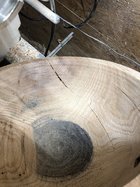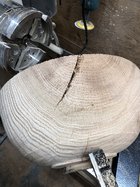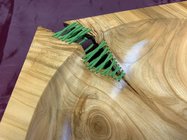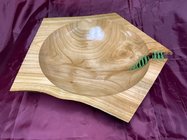Also, I think a possibility of a better choice of location of the blank - your rim being so very close to the pith, no wonder there's cracking.. I do not believe I have *ever* successfully twice turned a piece that the rim was that close to the pith without having to cut away a very large portion (I'd say at least 7 to 8 rings worth in your blank) away from the pith... You could possibly cut away a sizable portion of the rim (smaller bowl would result) and allow some more drying time , the cracks *sometimes* , in *some woods* may close up by themselves , but they'll still be visibly cracks, even if they completely close up to where you can just wick in some thin CA glue.
But, if it was me, seeing the worm hole in the side, and the cracks through the bottom (and into the tenon) I'd most likely toss that blank in the firewood pile and try again. If it was "green" un-dried wood, I'd say 2 months wait time is not enough - I will usually quote a 4 to 6 month lead time at a minimum on a twice turned bowl when the customer brings me the log (assuming, that is, the log is even worthy in my judgment) , so many casual customers that just bring me the wood for the heck of it, will tend to pick a natural edge once-turned bowl instead (which can be just a few days out, with their understanding that the bowl IS going to warp and move over time.)






